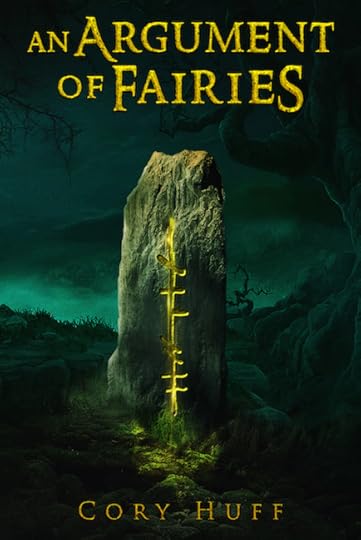Cory Huff's Blog: The Abundant Artist Goodreads blog, page 18
September 12, 2018
Top 9 Multimedia Online Art Classes
As we learned when we went looking for the top-earning Patreon artists, teaching art online can be a tremendously lucrative business. The great thing about the Internet is the wide variety of options you have if you want to share your art skills with the world and make a little money doing it- you aren’t restricted to a single platform.
If you’re not using Patreon, you can use YouTube to give viewers a small taste of what you can teach them and make them hungry for more, then direct them either to your own website to purchase courses, or use a teaching marketplace like Udemy or Skillshare.
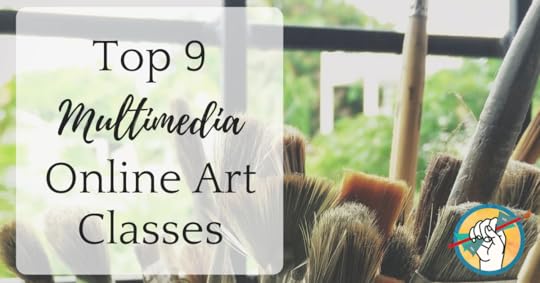
We’ve examined a small sampling of the top multimedia online art classes in three categories: artists teaching courses on their own website (often driving traffic from YouTube), artists teaching courses on Udemy, and artists teaching courses on Skillshare.
Artists Teaching Courses on Their Own Website:
Kelly Rae Roberts: Hello Soul, Mixed Media Mantras
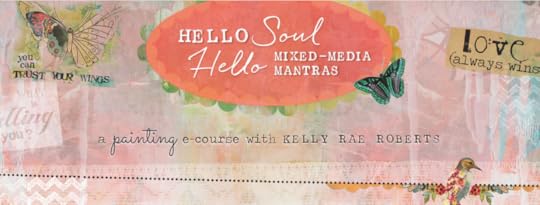
Class Price: $149
Topic: This class is a combination of journaling and mixed-media art making.
Structure: Three sections with a total of 17 high-def videos as well as downloadable materials.
What Stands Out? Rather than filming the videos like a one-on-one course between the instructor and the viewer, these videos feature Kelly Rae giving the instructions to a guest student.
Kelly Rae’s vibe is very authentic and open-hearted. She has positioned herself in the market to speak to people looking to express themselves with authenticity and a generic spirituality through her unique mixed-media techniques. Kelly Rae Roberts is a star example of a super well-defined, consistent, and memorable brand. Once you’ve seen her work, you’d recognize it anywhere- and she translates this very well to her courses.
This course also provides lifetime access to a private Facebook group. This is an easy and free way to build and expand your brand and entice your potential students. Check out our interview with Kelly Rae Roberts here.
Proko: Drawing Courses
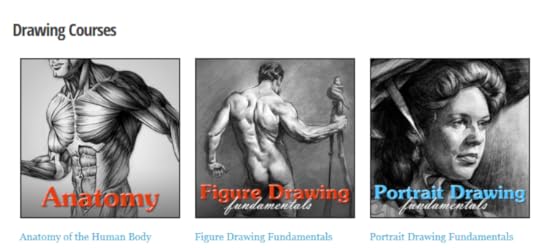
Class Price: $59-$89 for individual courses
Topic: Drawing the human body- there are courses in anatomy, figure drawing, portraiture, and caricature.
Structure: Courses are typically broken down into individual lessons, which you can purchase as individuals or bundled together. Courses include videos, ebooks, downloadable lesson materials, access to virtual 3D models, and the opportunity to receive personal drawing critique from Stan Prokopenko.
What Stands Out? Stan Prokopenko has a silly and somewhat gregarious personality, which he lets shine through in his videos. This endears him to his viewers and sets him apart from the drier art courses out there.
There are a lot of resources available once you’ve purchased the course including ebooks and really cool 3D models. Stan also offers students the chance to be featured in professional critique videos.
Proko videos on YouTube have views into the hundreds of thousands and even millions, undoubtedly due to the right blend of professional editing, humor, and high quality material. It’s very likely that a large percentage of course sales come directly from YouTube (the courses are, of course, linked in each YouTube video.)
Will Kemp Arts School: Absolute Beginners Acrylic Course
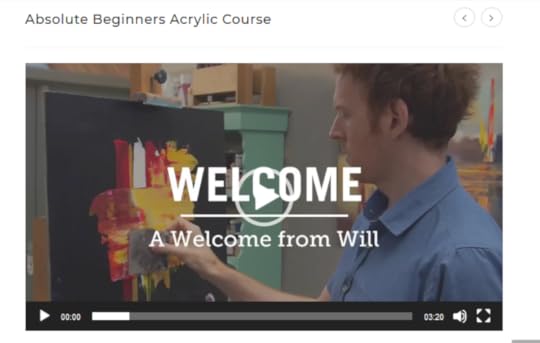
Class Price: $63.76
Topic: Acrylic painting for, as it states, absolute beginners who have never painted before.
Structure: 7 video courses, 45 minutes and shorter, that teach the basics of working with acrylics as well as walk the student through creating three separate pieces including landscapes and a still life.
What Stands Out? This class is very specifically targeted at those who desire to paint but feel intimidated by getting started and lack both time and confidence to jump the initial hurdle of learning how. The videos are intentionally short for busy people pressed for time, and the course is kept simple. At a lower price point than some other online art courses, the only supplemental materials are reference images.
Will has positioned himself as an artist and teacher who is bringing professional art “secrets” to the layperson who has perhaps never touched a paintbrush before, all in a friendly and approachable way.
Art Courses on Udemy:
The Ultimate Drawing Course: Beginner to Advanced

Class Price: $11.99 on sale (Normally $149.99)
Topic: This course breaks the science of drawing down to the fundamentals as a resource for complete beginners, as well as a strong drawing foundation for artists. The selling point is to start the course as an absolute beginner and finish with advanced drawing skills.
Structure: 11 sections each with short video lectures on drawing fundamentals including shape and form, values and contrast, space and perspective, figure drawing, and more.
What Stands Out? This course has a very comprehensive curriculum including a large Getting Started section with helpful links, tips for using the course successfully, a breakdown and explanation of the required materials, and the chance to join a Facebook community.
For the price, the course offers massive value, and students on Udemy have taken notice- this course has been purchased by over 200k people!
This course also offers a money-back guarantee.
The Secrets to Drawing

Class Price: $13.99 sale price (normally $29.99)
Topic: This is another course on the fundamentals of drawing.
Structure: 28 HD videos with 26 accompanying downloadable ebooks.
What Stands Out? The large amount of supplemental downloadable material add a lot of value to this course. Sometimes it isn’t possible to sit down and watch a video, and the supplemental materials provide similar step-by-step instruction with images and illustrations.
The instructor of this course, Matthew Fussell, also sells his courses through his website, The Virtual Instructor.
Mastering Brushstrokes, Jill Poyerd

Class Price: $13.99 ($49.99 regular price)
Topic: This course is created to help beginner artists master the necessary brushstrokes for oil, acrylic, and watercolor painting.
Structure: 7 sections each with a high number of short video lectures and supplemental exercises and questions. Two bonus sections are included with extra videos on the history of brushstrokes and using quality materials.
What Stands Out? Jill Poyerd’s course features a high number of downloadable resources and assignments. Each section is broken down into very small manageable chunks so the course can be completed a little bit at a time.
Art Courses on Skillshare:
Mastering Logo Design: Gridding with the Golden Ratio
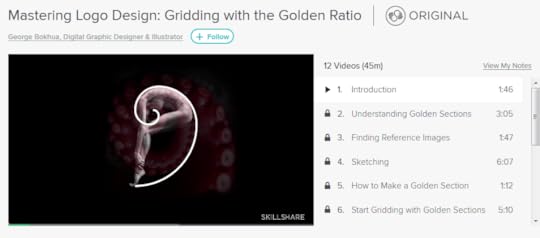
Class Price: Free with Premium Skillshare membership
Topic: This is a course on logo design using the Golden Ratio
Structure: 11 short videos, all 6 minutes or shorter.
What Stands Out? This class includes access to projects produced by other students who have taken the course. This is a really helpful way to visualize and generalize the concepts taught in the course.
This course is concise and to the point. There is something to be said for focusing in on a very specific topic (or problem) and creating a course around it. This isn’t a course on graphic design or even on logo design- it’s a course specifically on using the Golden Ratio for logo design. There’s a very clear end goal- understand how to create a logo of just about anything using a particular professional gridding method.
Fundamentals of DSLR Photography
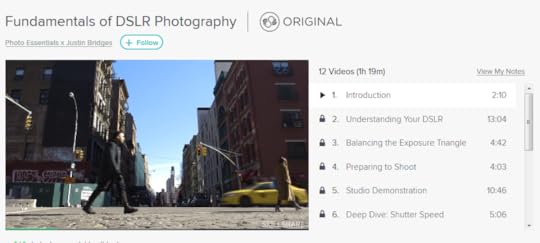
Class Price: Free with Premium Skillshare membership
Topic: This course teaches the basics of DSLR photography.
Structure: 9 short video lessons under 15 minutes, with an extra bonus video at the end.
What Stands Out? The videos are brief and aimed at beginner and intermediate photographers looking to understand more about their DSLR camera. With Skillshare, you have the ability to view projects produced by other students who have taken the course.
You can also view comments and questions left by previous students, which are often responded to by the course creator.
From Paper to Screen: Digitally Editing Your Artwork in Photoshop
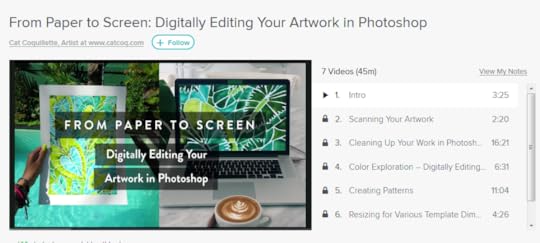
Class Price: Free with Premium Skillshare membership
Topic: Digitizing traditional artwork
Structure: 5 short videos.
What Stands Out? This class is focused on solving a particular problem- creating a digital copy of traditional artwork that can then be sold as a print. This course features a downloadable digital guide to the course material as well as a free high-res watercolor texture for use in Photoshop.
This course is quick and aimed at artists who are looking to sell their art online. The creator of the course is one of Society6’s top sellers, so the course is designed to entice artists who are interested in passive income through selling prints in online martketplaces.
What Can You Learn From These Courses?
You can learn a great deal from these courses without spending a dollar (although we highly recommend buying them and supporting independent artists if you want to learn the actual subject matter.) Here’s what you can take away from this list:
If you have something to teach, there is somebody out there who wants to learn it.
Short courses focused on a very specific skill or solving a specific problem do well.
Not unlike selling prints, creating an online course is a lot of up-front work. But with the right marketing it can result in years of passive income for you.
There are hundreds if not thousands of professional artists successfully supplementing their income by teaching art online.
Online art teachers come from all walks of life, some with a professional degree and some who are self-taught and passionate.
There are so many different ways to teach art online! Whether you want to use a marketplace platform like Udemy or Skillshare, or you’re willing to put in the work to selling the coursers directly on your website, there are tons of ways to start sharing your knowledge online- and make a profit doing it.
Have you ever taken an online art course? Would you ever consider creating one yourself? Let us know in the comments!
The post Top 9 Multimedia Online Art Classes appeared first on Online Marketing for Artists.
September 11, 2018
Second-Annual Hamptons Fine Art Competition July 1-Oct 1.
The Woven Tale Press, an online publication dedicated to showcasing noteworthy artists and writers, is holding its second annual Hamptons fine art competition July 1-Sept 15. This distinguished contest is in memoriam to artist Elizabeth Sloan Tyler – the mother of the founder of WTP, Sandra Tyler – to honor artistic talents deserving of greater recognition. First place is a one-week retreat in Elizabeth’s former home in the Hamptons, NY. Contestants hail from all over the country, with 2017 winners flying in from New Mexico and Texas.
“It means a great deal to me, to be able to repurpose my mother’s home as a retreat for artists,” says Sandra Tyler. Elizabeth Sloan Tyler was a prolific artist who painted in the obscurity of her cellar, back on Staten Island where her daughter grew up: “My mother’s years of painting in that cellar serve as an apt metaphor for what we strive for at WTP: to bring to light works by artists who otherwise may be toiling away in their own ‘cellars’.”
It was only later in life when her mother relocated to the East End of Long Island that she was finally able to have a studio filled with light. Sandra Tyler now seeks to share that light-filled studio and her mother’s home, with other artists. The charming, expanded 1909 cape, imbued throughout with her mother’s ambient abstract landscapes, is an oasis for the creative seeking a quiet escape, and is walking distance to the Amagansett town, ocean beach and New York City train.
Since its inception in 2013, WTP has expanded into a full-fledged enterprise showcasing standout works of art and literature. Both writers and visual artists alike praise WTP for its scope and mission. “The Woven Tale Press continues to be a valuable media outlet source for an array of artists that cross a variety of mediums,” artist John McCaw notes. “The eclectic mix of art combined with the aesthetic layout and the knowledgeable staff make Woven Tale Press a leader in an ever changing global art market.” And of WTP’s standing as a literary journal, writer Jaqueline Crooks states, “The Woven Tale Press features writers and artists from around the world who have something different to say. It is definitely where I want my stories to be placed—it means I’m going in the right direction.”
Complementing the digital magazine, is the WTPCentral blog with daily posts on everything from interviews and artist-studio peeks; exhibition and indie book reviews; and exclusive gallery curator profiles to distinctive reviews of artists’ and writers’ websites which draw attention to these cyber “cellars” that otherwise may go unnoticed. The WTP “Bookmarks” monthly series is devoted to spotlighting various literary and art resources from around the web, and the WTP quarterly art correspondent series features writers who report back on gallery highlights from various cities like New York, Massachusetts, and Los Angeles.
WTP is renowned for its diversity of talents featured in its magazine which is published ten times a year. The scope of mediums runs the gamut from painting and photography to sculpture and installation. Recent standout WTP artists include:
Dillon Samuelson’s whose paintings and drawings use portraiture and images of the human body to express emotional content. Most of the imagery is self-portraiture or personal friends: “In these paintings I’m focused more on an impression than a direct likeness; using light, implied movement, or paint application to capture a sense of a person or emotion. I find I can sometimes express a feeling better through the distortion or obstruction of a face than I can with a more true-to-life approach.”
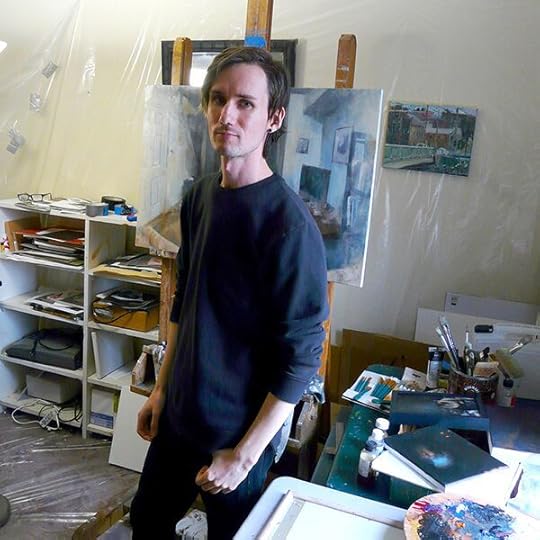
Dillon Samuelson
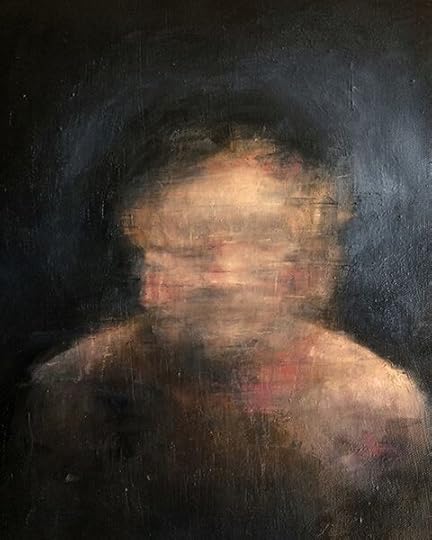
Self-Portrait
Oil on canvas
11” x 14”
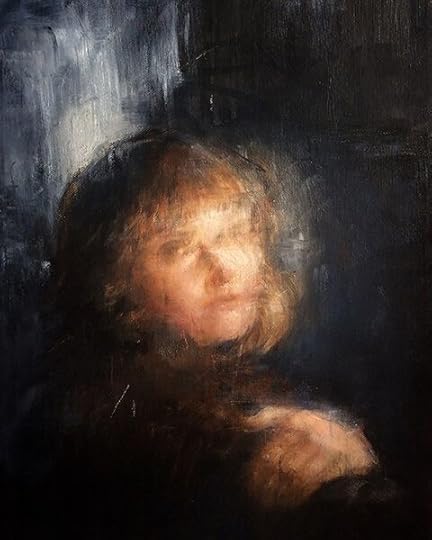
Em
Oil on canvas
12” x 16”
Susan Clinard who works in wood, clay, bronze, stone and mixed media. As the artist-in-residence for the Eli Whitney Museum in Hamden, CT, her studio is a 200-year-old, renovated barn: “In the main part of the barn, there are several rooms where objects have been pushed aside throughout the years by its many inhabitants. Specifically, the objects reflect the brilliant mind of the Eli Whitney Museum’s director Bill Brown, who has been collecting oddities, gears, cranks, springs…you name it, it’s likely there. I have been the fortunate recipient of some of these lovely objects, which carry a history with them as well. I like to imagine what that history might be and then in my work incorporate some of the sensation I get from this exploration.”
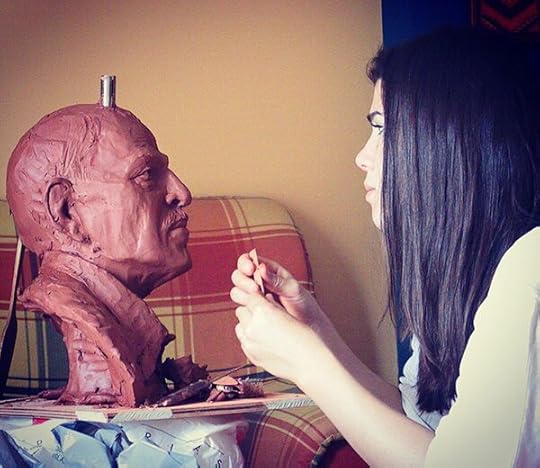
Susan Clinard
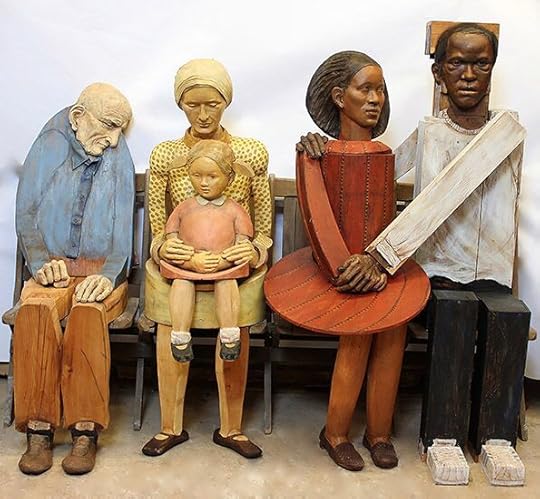
Waiting Room #2
Mixed media
8’ x 4.5’ x 38”
By Susan Clinard
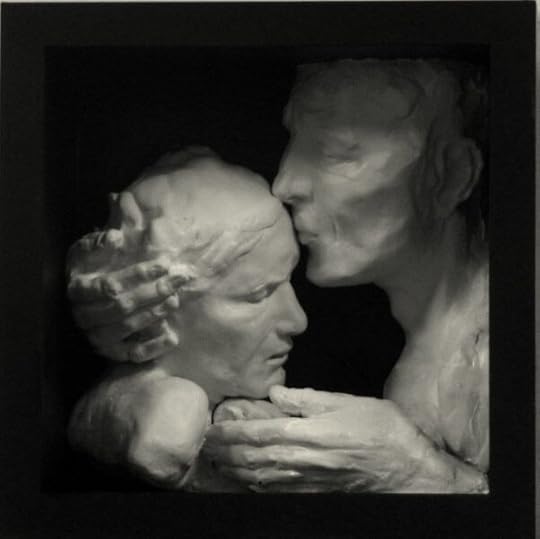
Holding her
Mixed media
9” x 9” x 4”
By Susan Clinard
Emilia Dubicki whose paintings are primarily abstract, but sometimes representational imagery is integrated into the work. She shows work nationally and internationally and has received residencies from the I-Park Foundation, the Vermont Studio Center; and the Wurlitzer Foundation. In summer of 2017 she showed paintings at Five Points Gallery in Torrington, CT and in summer 2016 she had a show at Fred Giampietro Gallery, New Haven, Connecticut. Her paintings are in numerous private and corporate collections. “Each painting is an opening into another painting, to try and do what I didn’t do in the previous work.”
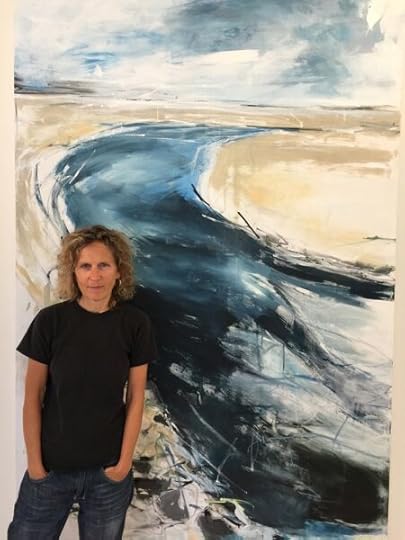
Emilia Dubicki
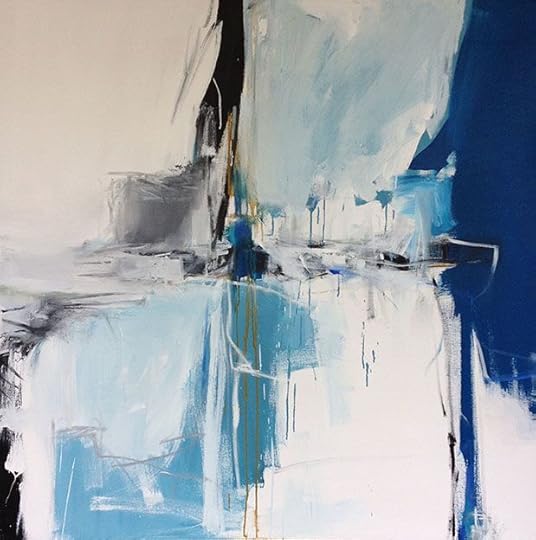
The Summer House
Acrylic on canvas
56.5” x 56.5”
By Emilia Dubicki
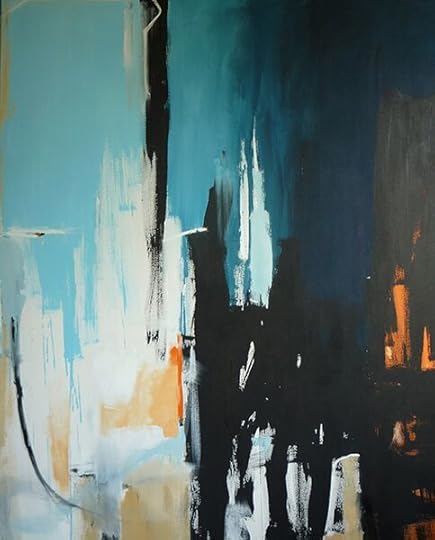
Sweetest Decline 1
Oil on canvas
54” x 66”
By Emilia Dubicki
Mayme Kratz , who is a mixed-media artist best known for creating art inspired from the natural life of the desert that surrounds her Phoenix, Arizona home and studio. Kratz creates sculptures using found organic fragments, desert ephemera and resin. She collects seeds, flower pods, bones, wings, vertebrae, shells, as well as birds’ nests, twigs and branches–all dried and preserved in the harsh desert environment. With great reverence for the natural world, Kratz creates cast resin pieces of fragile beauty locked in fluid translucent resin. The artist embeds her found objects, sometimes spliced or broken apart and arranged in precise patterns, in luminous, cast-resin wall panels and vessels.
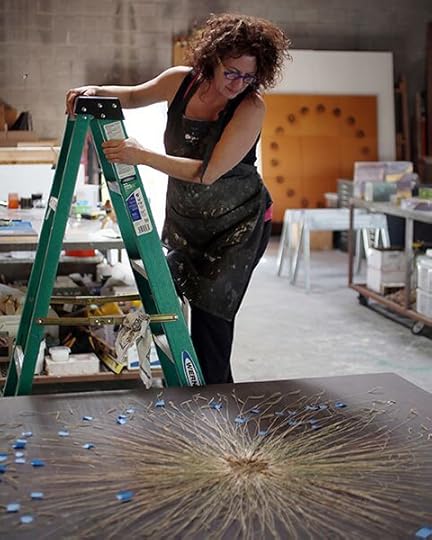
Mayme Kratz
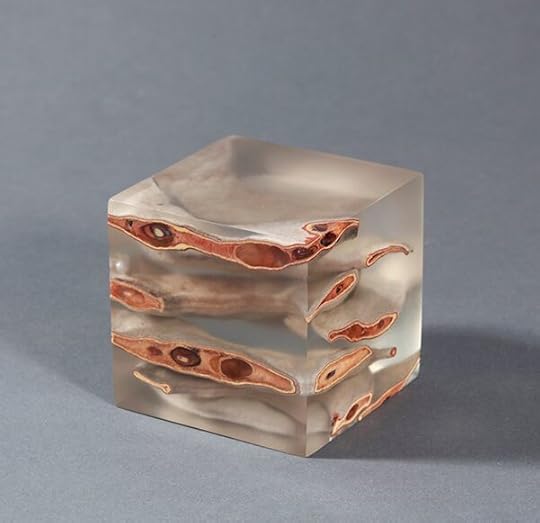
Memory Block 225
Resin and seed pods
2” x 2”
By Mayme Kratz
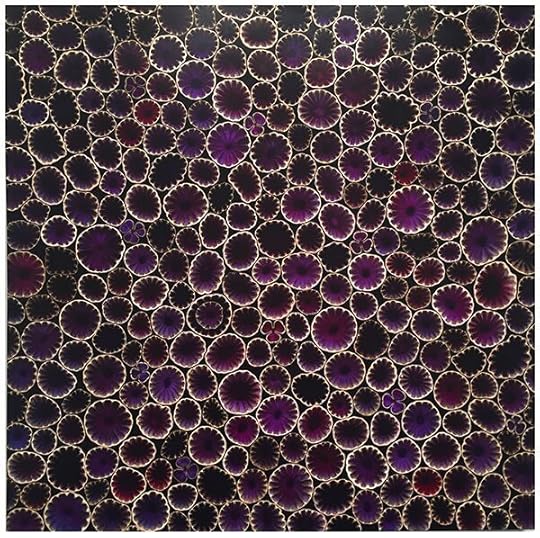
Night Bloom
Resin, poppy pods
And hesperaloe pods on panel
By Mayme Kratz
All winners will be published in The Woven Tale Press and be featured in a spotlight on WTPCentral. Proceeds from the $25 entry fee go to supporting the WTP editorial staff and general editorial expenses. For more information, as well as to subscribe for free, go to http://www.thewoventalepress.net/.
The post Second-Annual Hamptons Fine Art Competition July 1-Oct 1. appeared first on Online Marketing for Artists.
Second-Annual Hamptons Fine Art Competition July 1-Sept 15.
The Woven Tale Press, an online publication dedicated to showcasing noteworthy artists and writers, is holding its second annual Hamptons fine art competition July 1-Sept 15. This distinguished contest is in memoriam to artist Elizabeth Sloan Tyler – the mother of the founder of WTP, Sandra Tyler – to honor artistic talents deserving of greater recognition. First place is a one-week retreat in Elizabeth’s former home in the Hamptons, NY. Contestants hail from all over the country, with 2017 winners flying in from New Mexico and Texas.
“It means a great deal to me, to be able to repurpose my mother’s home as a retreat for artists,” says Sandra Tyler. Elizabeth Sloan Tyler was a prolific artist who painted in the obscurity of her cellar, back on Staten Island where her daughter grew up: “My mother’s years of painting in that cellar serve as an apt metaphor for what we strive for at WTP: to bring to light works by artists who otherwise may be toiling away in their own ‘cellars’.”
It was only later in life when her mother relocated to the East End of Long Island that she was finally able to have a studio filled with light. Sandra Tyler now seeks to share that light-filled studio and her mother’s home, with other artists. The charming, expanded 1909 cape, imbued throughout with her mother’s ambient abstract landscapes, is an oasis for the creative seeking a quiet escape, and is walking distance to the Amagansett town, ocean beach and New York City train.
Since its inception in 2013, WTP has expanded into a full-fledged enterprise showcasing standout works of art and literature. Both writers and visual artists alike praise WTP for its scope and mission. “The Woven Tale Press continues to be a valuable media outlet source for an array of artists that cross a variety of mediums,” artist John McCaw notes. “The eclectic mix of art combined with the aesthetic layout and the knowledgeable staff make Woven Tale Press a leader in an ever changing global art market.” And of WTP’s standing as a literary journal, writer Jaqueline Crooks states, “The Woven Tale Press features writers and artists from around the world who have something different to say. It is definitely where I want my stories to be placed—it means I’m going in the right direction.”
Complementing the digital magazine, is the WTPCentral blog with daily posts on everything from interviews and artist-studio peeks; exhibition and indie book reviews; and exclusive gallery curator profiles to distinctive reviews of artists’ and writers’ websites which draw attention to these cyber “cellars” that otherwise may go unnoticed. The WTP “Bookmarks” monthly series is devoted to spotlighting various literary and art resources from around the web, and the WTP quarterly art correspondent series features writers who report back on gallery highlights from various cities like New York, Massachusetts, and Los Angeles.
WTP is renowned for its diversity of talents featured in its magazine which is published ten times a year. The scope of mediums runs the gamut from painting and photography to sculpture and installation. Recent standout WTP artists include:
Dillon Samuelson’s whose paintings and drawings use portraiture and images of the human body to express emotional content. Most of the imagery is self-portraiture or personal friends: “In these paintings I’m focused more on an impression than a direct likeness; using light, implied movement, or paint application to capture a sense of a person or emotion. I find I can sometimes express a feeling better through the distortion or obstruction of a face than I can with a more true-to-life approach.”
[image error]Dillon Samuelson
[image error]
Self-Portrait
Oil on canvas
11” x 14”
[image error]
Em
Oil on canvas
12” x 16”
Susan Clinard who works in wood, clay, bronze, stone and mixed media. As the artist-in-residence for the Eli Whitney Museum in Hamden, CT, her studio is a 200-year-old, renovated barn: “In the main part of the barn, there are several rooms where objects have been pushed aside throughout the years by its many inhabitants. Specifically, the objects reflect the brilliant mind of the Eli Whitney Museum’s director Bill Brown, who has been collecting oddities, gears, cranks, springs…you name it, it’s likely there. I have been the fortunate recipient of some of these lovely objects, which carry a history with them as well. I like to imagine what that history might be and then in my work incorporate some of the sensation I get from this exploration.”
[image error]Susan Clinard
[image error]
Waiting Room #2
Mixed media
8’ x 4.5’ x 38”
By Susan Clinard
[image error]
Holding her
Mixed media
9” x 9” x 4”
By Susan Clinard
Emilia Dubicki whose paintings are primarily abstract, but sometimes representational imagery is integrated into the work. She shows work nationally and internationally and has received residencies from the I-Park Foundation, the Vermont Studio Center; and the Wurlitzer Foundation. In summer of 2017 she showed paintings at Five Points Gallery in Torrington, CT and in summer 2016 she had a show at Fred Giampietro Gallery, New Haven, Connecticut. Her paintings are in numerous private and corporate collections. “Each painting is an opening into another painting, to try and do what I didn’t do in the previous work.”
[image error]Emilia Dubicki
[image error]
The Summer House
Acrylic on canvas
56.5” x 56.5”
By Emilia Dubicki
[image error]
Sweetest Decline 1
Oil on canvas
54” x 66”
By Emilia Dubicki
Mayme Kratz , who is a mixed-media artist best known for creating art inspired from the natural life of the desert that surrounds her Phoenix, Arizona home and studio. Kratz creates sculptures using found organic fragments, desert ephemera and resin. She collects seeds, flower pods, bones, wings, vertebrae, shells, as well as birds’ nests, twigs and branches–all dried and preserved in the harsh desert environment. With great reverence for the natural world, Kratz creates cast resin pieces of fragile beauty locked in fluid translucent resin. The artist embeds her found objects, sometimes spliced or broken apart and arranged in precise patterns, in luminous, cast-resin wall panels and vessels.
[image error]Mayme Kratz
[image error]
Memory Block 225
Resin and seed pods
2” x 2”
By Mayme Kratz
[image error]
Night Bloom
Resin, poppy pods
And hesperaloe pods on panel
By Mayme Kratz
All winners will be published in The Woven Tale Press and be featured in a spotlight on WTPCentral. Proceeds from the $25 entry fee go to supporting the WTP editorial staff and general editorial expenses. For more information, as well as to subscribe for free, go to http://www.thewoventalepress.net/.
The post Second-Annual Hamptons Fine Art Competition July 1-Sept 15. appeared first on Online Marketing for Artists.
September 5, 2018
How to Hire a Pro to Build Your Artist Website
You don’t have to do it all yourself.
This is especially true of creating your artist website. There are many options available to you if you’re up to building your website yourself (we put together an Ultimate Guide to Choosing an Artist Website Builder to help you decide).
You may decide, however, that you don’t have the time or the desire to dive into such a large task, especially if it falls outside your skill set. In this case, you can hire a web designer or developer to do the work for you. Here’s how to do it.
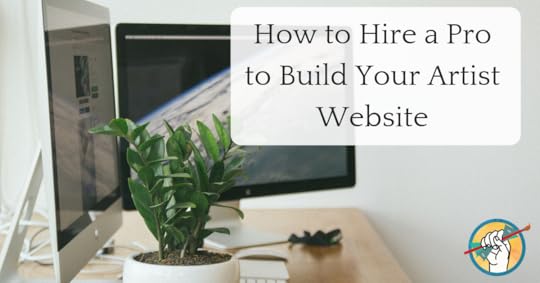
When should you hire a web designer?
You’re finding building your website excessively stressful or you just don’t have the time.
You want a custom design to match your branding.
You want special features, or an appearance not available from a drag n’ drop website builder or template.
When should you hire a web developer?
You want increased connectivity between your website and your shopping cart/apps/etc.
You want to sell complicated products (size/color variations, customizable items, etc) or digital products like e-courses.
You’re having problems with your hosting, strange error messages, things aren’t connecting the way they should with your existing website
Pricing guidelines
Determine your budget before you begin; what do you absolutely need to have a professional do for you? What could you let go of if it doesn’t fit your budget?
Before you balk at a high price tag, consider how much time this is saving you (how many paintings could you produce during that time?) and how much your time is worth (what could you sell those paintings for?)
A custom built website will start around $3,000-$5,000.
Need to cut costs?
Hire a designer, then implement the design yourself. In that case, a pro designer may run you only $1,000-$2,000.
If your budget is too tight to hire a quality developer or designer, your next best option is to use a custom template from Shopify or WordPress. A custom template from Shopify will cost you between $140-$180. Popular and highly customized WordPress themes like Divi (see our Divi theme review here) will run you about $55.
How to source a web designer or developer
Word of mouth is best! Ask fellow pros whose websites you admire for their recommendations.
Freelancer platforms like Upwork and 99Designs. (Here’s a helpful breakdown of the various freelancer platforms and which you should use if you go this route.)
A note on freelancer platforms: the quality you will find on platforms like Upwork will vary dramatically. These platforms usually provide ways for you to see how many hours a developer or designer has billed through the site in addition to feedback from past clients, but caveat emptor.
Some designers are also developers and vice-versa, but if you’re looking for an all-in-one package to take you from blank page to beautifully designed and completely functional website, expect to pay more. You need to know what you want before you begin requesting quotes.
Bottom line
When making the decision to hire a designer or developer to help you build your website, you will do yourself a tremendous favor by entering in to this endeavor with a clear budget in mind and a list of exactly what you want. This list should include what you want your website to look like as well as every page you want included, and any special functions or utilities such as eCommerce, live chat, contact forms, event registrations, etc. We even recommend doing a rough sketch of what your website should look like, so your designer can have a good place to start from.
If you need an artist website but don’t have any idea what you would ask a developer to build for you, you’ll want to take Artist Websites That Sell first. This short course is designed to help you discover exactly what you need out of your website. By the end of the course, you will have filled out a creative brief that you can present to your designer or developer (and they’ll love you for it.)
Have you hired a pro to help you with your website before? How did it go?
The post How to Hire a Pro to Build Your Artist Website appeared first on Online Marketing for Artists.
September 4, 2018
9 Years Coaching Artists: What I’ve Learned
On a call a few weeks ago, someone asked me what are the top things I’ve learned from my experience helping artists? I realized I didn’t have a pat answer. How do I distill down the last 9 years of teaching classes to more than 5,000 artists?
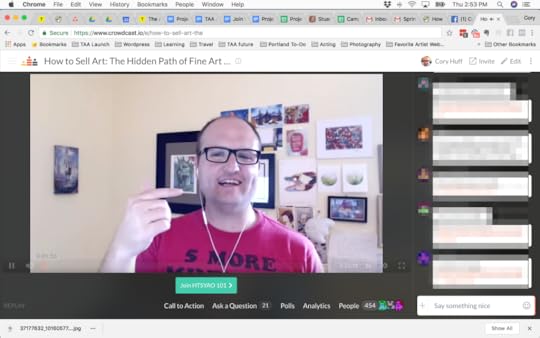
In no particular order, here are my thoughts on the subject. Not all of these apply to every artist, but most of them apply to most emerging artists.
Good art does not sell itself. Except for when it does. Either way, you can’t depend on luck to make a living. You need to go create more opportunities for yourself.
Women have it harder. Of the 100 best-selling living artists in the world in 2017, there were no women. Some galleries don’t work with women. Women are socialized to not ask for sales, or not to take up space in conversations. This hurts their careers. That said, it’s getting better and you can’t let this dictate your actions.
The biggest obstacles artists face. Knowledge on how to sell and the belief that it can be done are usually the two biggest things emerging artists lack. The first one is easy to solve. The second one is much more difficult. You can’t buy belief. A distant third is the ability to build a habit of working on a schedule and repeating successful actions.
Learn to let go. Stop attaching your self worth to your art career. You’ll have more success and be happier if you do.
Learn how to tell a good story. Everyone thinks Jackson Pollack’s work could be done by their kid until they learn how, and why, he did it.
Successful artists don’t depend on inspiration. They work regular hours, whether that means making new art or doing the promotional work they need to do to sell it, and they accept that its all part of the experience of being an artist.
Seeing artists succeed is probably one of the most exciting things that I do. Earlier this year, an artist emailed me to tell me that she took a class two years ago, and now she was absolutely killing it with new sales. She had been absolutely quiet during class, and I don’t think we ever had any kind of extensive conversation. I probably cried for 5 minutes after reading her email. To be able to have that kind of impact is humbling and amazing. I’m really lucky to do what I do.
The most common thing artists avoid doing. Artists have a tendency to avoid marketing or anything that isn’t making art. Literally, if you’re not spending 50% of your art-business time working on selling, you’re not spending enough time on marketing.
Information is worthless if you don’t use it. Too many artists spin their wheels taking marketing classes and never doing the work. If I catch artists doing this I forbid them from taking our classes or coaching with me. I’ve probably turned down a dozen high-end coaching clients for this. Last night I told 150 people on a webinar this, right after I offered them a class.
The Internet and technology can be a crutch and a distraction. The majority of art is still sold offline, in galleries and art shows and open studio events. Social media and the web should be focused on getting people to see your art in person. Spending 6 months getting your website ready is a means of procrastination usually born out of fear. Instagram will ruin your life if you depend on it long term.
Relationships are the most important thing in business. I can’t tell you how many artists I know who could never get a showing in a gallery are wildly successful because they focus on their relationships with their collectors. This doesn’t just mean people with a million social media followers. It can also be a relatively unknown artist with just 100 true fans who buy everything they make.
Too many artists fail to meet the basics of professional conduct. Communicate in a timely fashion. Write coherent sentences. Show up and deliver work on time. Be kind. If you can do those things, you’ll be better than 80% of your fellow artists.
We will give you the knowledge, and surround you with people who will support you and cheer you on. The rest is up to you.
Want to join us for How to Sell Your Art Online 101? Enrollment is open now.
The post 9 Years Coaching Artists: What I’ve Learned appeared first on Online Marketing for Artists.
August 29, 2018
Best Time Management Apps for Artists
Working for yourself can be blissful. You’re the boss. You’re in charge of what you do and when you do it. If you want to take a walk in the middle of the day, or pick the kids up from school, or run to the store, you have the freedom! Isn’t it great?
Working for yourself can be excruciating. You’re not accountable to anyone. There’s no one to help you manage your time effectively. You can get sidetracked by a messy studio or social media, and before you know it the whole day has slipped away and you’ve accomplished nothing.
Poor time management is the Achille’s heel of the otherwise talented and driven artist.
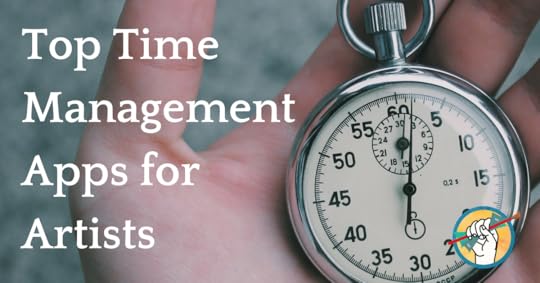
Time Management Apps Can Help You Get Stuff Done
Since ain’t nobody the boss but you, a time management app can help you hold yourself accountable. It gives you a clear visualization of where you’re spending your time, what’s on your plate, and what you’ve accomplished. For very visual people, this can make a world of difference.
Rescue Time
Rescue time bills itself as an app that helps you recognize your habits so you can be more productive. If you’re like me, you might be balking a bit at the prospect of facing those habits, but it can be the key to improving your productivity.
Top features:
Tracks how much time you spend on applications and websites
Allows you to set up alerts when you’ve spent a certain amount of time on a given site
Provides detailed reports and data based on your activity
Block distracting websites for chunks of time
Complete control over when you measure your time spent online.
Cost:
Lite: Free. Track your time and access reports.
Premium: $6.75/month. Track time, get alerts, block distracting websites.
Platforms: Mac, PC, Android, Linux
Bottom Line: If you’re spending too much time on Reddit, YouTube, or social media but find it challenging to moderate your usage, Rescue Time can give you valuable insights into where you’re spending your time and, for a small fee, help you block those sites so you can focus on the work you need to do.
Charlie Gilkey, creator of Productive Flourishing, a productivity community for creatives, entrepreneurs, and business owners, graciously shared his list of the best time management apps with us:
Cold Turkey Blocker
“The ability to block sites AND apps with this app and set up a blocking schedule is what makes it shine. There have been plenty of mornings that I may have gotten distracted on my own were it not for Cold Turkey Blocker auto-blocking me out of the app or site.” – Charlie Gilkey
Top features:
Cold Turkey blocks specific websites according to a schedule you’ve set, and if you try to access a blocked site it shows you a motivational quote instead.
Block the entire Internet for a period of time
Block specific pages (like a certain Facebook profile)
You can block an entire site, but whitelist certain pages (if, for example, you need to access a Facebook business page for work but don’t want to get distracted while you’re there).
Cost:
Basic: Free. Block unlimited websites on timers, enable statistics to track your usage)
Pro: $19.34 one-time fee. Basic features plus scheduling, app blocking, daily time limits, and more.
Platforms: macOS and Windows. Purchase once and install across all your platforms.
Bottom Line: Cold Turkey takes RescueTime Lite one step further and allows you to block distracting websites for free in addition to providing usage data. If you already know you spend too much time on Facebook, it might be time to give it up Cold Turkey… at least during working hours. The one-time fee if you decide to upgrade is much more appealing than a subscription model, too.
1Password
“Because life’s way too short to have to remember passwords and/or be on the “forgot my password” email loop.” – Charlie Gilkey
Top features:
Remembers all your passwords for every website
Allows one-click login
End-to-end encryption
Encryption keys protected with a Master Password
Cost:
Single: $2.99/month. Includes unlimited passwords, the ability to restore deleted passwords, Travel Mode, and two-factor authentication for increased security.
Family: $4.99/month. All features for up to 5 family members.
Platforms: Mac, iOS, Windows, Android, and the web.
Bottom Line: If you spend way too much time trying to remember your username/password combination for any given site and end up changing your password every time you try to log in, it might be time for a password manager. Those minutes add up!
TextExpander
“How many times do you type your email address per day? Or type out the same text over and over? Stop that with TextExpander.” – Charlie Gilkey
Top features:
Insert “snippets” as you type. Information like email addresses, signatures, form letters, images, etc. are inserted into your text automatically via a computer shortcut or abbreviation.
Available across all devices
Reminders to use your snippets as you type
Cost: $3.33/month. Save an unlimited amount of snippets on all your devices. Includes email support.
Platforms: Mac, Windows, iOS.
Bottom Line: Are you spending much of your time filling out applications or writing letters for art shows, galleries, etc? Save the information you keep repeating (contact information, your artist statement, important CV information) as snippets and cut down on the time you spend in front of the computer. That means more time for creating art.
Ulysses
“The one writing app to rule them all. Full-screen writing in typewriter mode and organization makes writing even more fun.” – Charlie Gilkey
Top features:
Robust yet distraction-free writing interface
Keep an organized library of all writing projects
iCloud synchronization across iOS devices
Export feature allows you to format your text into PDFs, Word docs, and eBooks.
Cost:
$4.99/month. Subscription unlocks the app across all iOS devices. Free 14-day trial.
Platforms: Mac and iOS
Bottom Line: If blog writing, process journaling, or any other kind of writing is a part of your daily routine, Ulysses can help you stay organized using a clean interface and quick, instantly-formatted publication to WordPress or Medium. The ability to save your text as a formatted PDF without requiring extra software is extremely useful!
Cartoonist and educator Jessica Abel, author of Growing Gills: How to Find Creative Focus When You’re Drowning in Your Daily Life, also shared her favorite productivity app with us:
Omnifocus
“I use OmniFocus religiously. I’ve been using it since before it was a stand-alone app, and it’s like a fifth appendage. I don’t know what I’d do without it.” – Jessica Abel
Top features:
Context view allows you to see what projects you need to do and in what context you can accomplish them: at your desk, on the go, etc.
Flag important projects that need immediate attention to keep your priorities straight.
Calendar with forecast: see your daily schedule as well as your full calendar in one place
Periodically review your projects
Quick app entry using a keyboard shortcut, so when you have an idea you can write it down right away.
Cost:
$40 Mac, standard. Standard features, macOS only.
$70 Mac, pro. Enhanced features, macOS only.
$40 iOS, standard. Standard features, iOS only.
$60 iOS, pro. Enhanced features, iOS only.
Platforms: Mac and iOS
Bottom Line: Omnifocus is an all-encompassing project management tool that’s meant to help you organize your workflows for both professional and private life. As you may notice from the higher price tag, it’s a large program meant to be the single tool you need to run your entire business. A more significant investment, but for busy pros it is worth the price tag.
Time management apps can’t take the place of a good disciplined routine, but they can help you stay focused, save time and reduce redundancies, and eliminate distractions. For more on managing your time effectively and making the most of your time, check out these other posts:
The 50/50 Time Rule for Art Business
Time Management for Artists: How to Feel More Satisfied at the End of Your Day
Podcast: Idea Debt with Jessica Abel
Is there a productivity app you love that we didn’t mention? Let us know in the comments!
The post Best Time Management Apps for Artists appeared first on Online Marketing for Artists.
August 27, 2018
An Argument of Fairies & Project Leonardo
Two things I want to let you know about.
I wrote a novel.
I have a crazy new project that I might need your help with.
“Being good in business is the most fascinating kind of art,” Andy Warhol famously said. “Making money is art and working is art and good business is the best art.” I hope that by sharing with you what’s going on with me behind the scenes, you can see the passion I have for life and creativity.
Here’s a little information about both projects. At the end of this email, I also wrote a bit about why I’m sharing these with you and the origin of how they came about.
1. I wrote a novel.
Here’s the cover. Isn’t it pretty rad?
When Liam and Sophronia witness a murder committed by the Sidhe – fairy creatures out of nightmares – they flee for their lives. As they flee the Sidhe, they uncover an abandoned city where magic was taught through an ancient written text known as Ogham. Humanity once lived and worked with the Sidhe as equals, but now the city is only a haven of dangerous Sidhe creatures. There is very little time to figure out the mystery of what happened to the city, as Mindee, a dedicated Sidhe assassin, will stop at nothing to keep the secret Sidhe world safe from a humanity that they view as dangerous.
Independently, Aidan and Nia take faith journeys that diverge and lead them to intersect with Liam and Sophronia’s headlong flight. Together, the four of them put their faith and friendship to the test as they find a way to defend themselves from the single minded and implacable Mindee.
An Argument of Fairies is a fantasy novel that explores themes of forgotten language, trauma, and faith.
The book is available for pre-order on Amazon at this link. It comes out on September 3, 2018.
2. Project Leonardo
I have a new project I’m really excited about, and I might need your help.
I’m calling it Project Leonardo, because Leonardo Da Vinci was a multi-potentialite who dabbled in subjects as diverse as painting, engineering, anatomy, set design, and more. I want to bring that level of diversity to my professional life. To that end, I’ll be launching 12 websites in 12 months, and video blogging about the whole thing.
I’m sharing it with you now because I’m looking for a few good collaborators. Many artists like you have experience and expertise in a variety of interesting topics. If you’ve ever wanted to start a niche website in some obscure topic and build a business around it, you can read more about who I’m looking for in a collaborator by clicking here:

THANKS!
Now that you know about these projects, I also want to talk a bit about what has happened behind the scenes. Many artists like you have been a part of TAA’s community for years and feel invested in what’s going on.
In 2016 and 2017, TAA went through a lot of growth. It was fun and exciting AND I realized that I needed to stretch my wings a bit and try some other things.
So, for much of 2017 I experimented with different activities and ways of working. I hired a team to help run TAA’s day-to-day operations. I started spending time every Friday writing fiction. I traveled to a bunch of places to teach workshops on marketing. I volunteered in a few new places. I helped some friends launch an online piano lesson company.
What I learned about myself last year is that I have a few things that I’m truly good at, my Zone of Genius, including helping people start new projects. So for the first half of 2018, I spent a lot of time thinking about what I really wanted to be doing.
I love The Abundant Artist, but like many of you, I’m a multi-passionate person. I enjoy marketing, but I also enjoy writing, performing, and collaborating with people on projects.
Some of TAA’s readers follow my personal Facebook page and have seen me talking about my new novel (details below). I figured that since word was already starting to get out, I wanted to let our larger group of readers in on all of the wonderful excitement.
Nothing at TAA is changing. We will continue offering courses and coaching in the same ways we always have. I’m just flexing and exploring other areas in order to be a more well-rounded human.
I recognize that you didn’t join TAA’s mailing list to get pitched my other projects, so I’ll try to keep personal promotions to a minimum here.
The Abundant Artist will always be here for you. This business is laser-focused on helping artists learn how to sell their art and create businesses that support their art-making dreams.
Back to your regularly scheduled TAA programming…
Thanks for indulging me,
Cory Huff
The post An Argument of Fairies & Project Leonardo appeared first on Online Marketing for Artists.
August 23, 2018
Case Study: Sara O’Connor, Heavy-Texture Pointillism
Sara O’Connor is a former lawyer who has been working with admirable determination to grow her art business and cultivate her brand for the past two and a half years. She creates heavy-textured pointillism art inspired by geology, the water, light, and color.
We sat down with Sara to learn a bit more about how she started out and where she’s headed.
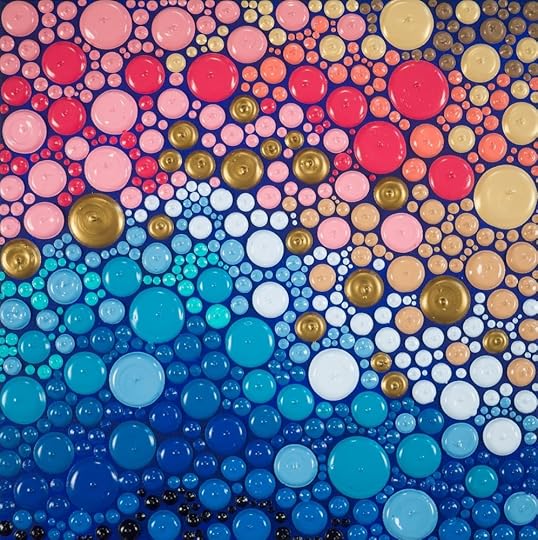
“Pink Sand Shore”, Sara O’Connor
Sara shared with us how she got started painting:
Sara: “In September 2015, I went on medical leave from my job as an attorney. During that time, I self-prescribed myself painting. I began using some of my husband’s left-over paint to dabble and have fun. After a few weeks, I was growing addicted and needed more paint. So, he and I decided to go to this tiny garage sale at a church in New Brighton, PA, which was coincidentally only a few blocks from where I argued one of my first cases as an attorney. The sale had cute knickknacks, like painted wooden snowmen. It was kitschy and adorable, and it was at that show I had my first sale. I sold a small Bitty Bite and booked one small commission. That was a big day for me. That was exciting.”
“You can’t become an overnight success without ten years of preparation.” – Sara O’Connor
In creating her art and attending that first show, Sara found so much purpose and enjoyment that she began to attend more art shows. The first shows were small, held in high school gymnasiums or craft fairs, but slowly and steadily Sara began to sell her work and gain a following. As she gained momentum, she realized that she had bigger aspirations:
Sara: “I am a perfectionist, and I knew that what I truly wanted out of my art was to begin selling on a national level with nationally-ranked shows. I started purchasing bare-minimum art supplies and investing in what would become my business. I left the practice of law in December 2016 and was finally ready to exhibit outside of Pennsylvania. During 2017, I exhibited in Washington, D.C., Virginia, Maryland, and Michigan, and, during 2018, I have added several more states to that list.
Now that I was exhibiting nationally and my art was selling at a steady pace, I was finally ready to purchase even more professional displays and have the business sustain itself. If you visit me at a show, you can see the quality display walls, brilliant lighting, and a welcoming covered setup. Frankly, I never realized as a patron of art fairs that the artists bring all that with them! But now, it’s all just part of the experience. Before, I was simply a passionate artist enjoying a hobby and occasionally selling my work. Now, I’m a professional artist, which requires a business-driven mindset.”
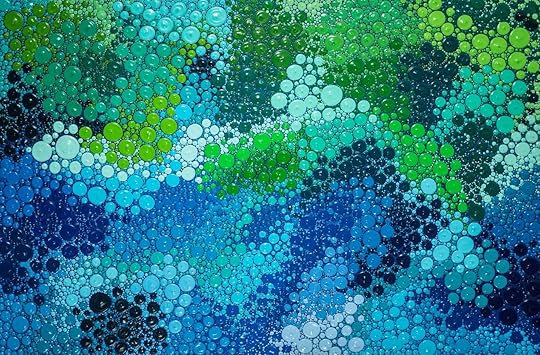
“Fillory and Further”, Sara O’Connor
After about a year of painting, Sara and her husband made the decision that Sara would stop practicing law and start painting full time:
Sara: “Since that switch, a lot of the art proceeds go straight back to the business because I want this to be sharp and sustainable for the long haul. You know, you can’t be an overnight success without ten years of preparation. And I’m in year 2 and a half. This is my new graduate program, and I’ll never stop studying.
This past year has really been about elevating my brand and locking in that consistent message. I’ve had to increase my prices four or five times since I began a mere two years ago. With higher prices, I gained increased sales and the ability to create larger, richer works that align with where I am heading. By 2020, I would like to present an installation exhibition that will give me the leverage to later design an interactive installation exhibition that is educational and gorgeous in its use of color and light.”
Sara is cultivating a particular high-end brand, and working to communicate to her collectors that her prices are rising rapidly and they’d be wise to invest now:
Sara: “I’m cultivating a client-base of excellence. Someone who truly is committing to a piece may not come to me for an impulse buy, although those are sexy too. When someone who confesses almost co-conspiratorially that he or she “never buys art before” but then invests four figures in what I do and can’t stop smiling with pride and contentment, well… the English language doesn’t quite have the word for that level of bliss. Frankly, I don’t need to tell prospective clients that the worth of my work has increased multiple times since I began; they need to look at the work, see how I present it, and instinctually know this is something special. One piece of advice I have for aspiring and professional artists is to not buy into the myth of a starving artist. Stand up for yourself and be abundant.”
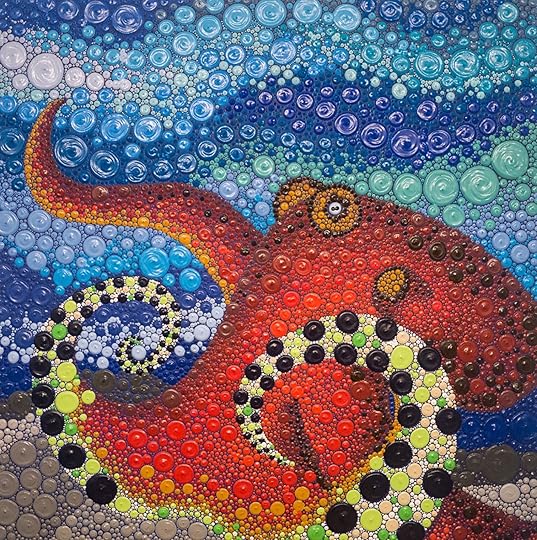
“Hank”, Sara O’Connor
Last December, Sara participated in Spectrum Miami at Miami Art Week, and she found that the desire to elevate her brand and attach that high-end price tag required her to “flex her artistic muscles.” She feels that her art unequivocally improved as a result of the intensive preparation required to exhibit during Miami Art Week.
“I hate trying to be patient. I’m really too hungry for my own good, and know what I have planned requires so much more than what I can accomplish on my own. Success takes time, branding takes content development, and the art I am creating should evolve and elevate as my experience and fanbase grows. Remember, just like someone else has to prove themselves to you before you buy into what they’re selling, you have to prove yourself to someone else.” – Sara O’ Connor
We asked Sara what she learned from The Abundant Artist and how she has applied that to her growing business:
Sara: “First and foremost, you need to figure out what your brand is, and it is something I work on weekly with new PR campaigns, etc. It’s okay if you’re still figuring that out. In fact, I’m going to put a capitalized letter on Your and a capitalized letter on Brand. I still do what I call “Kooky Kritters,” they’re very whimsical lighthearted creatures that people of all ages adore. Almost weekly, I still tug and pull with myself on whether or not to put them on the website because some clients truly adore them. It’s been hard for me to put a pin in a project that generates sales as a sub-brand, but it can confuse the message for my target collector.”
Sara has also learned from The Abundant Artist how important it is to stand by your value.
Sara: “That means if my work is (currently) $3.50 per square inch, there are inevitably going to be some people who, when they email me to commission a piece, I have to say no to because their budget doesn’t match the supply-and-demand of my time and my work. So, I’ll offer to make them a piece (if possible) based on their budget, but, as any professional in any industry must do, you must stand up for yourself.
And, to dovetail with that, there seems to be a big movement by charities who misunderstand the rules pertaining to charitable deductions. As the law currently stands as I understand it, an artist cannot take a tax deduction for the fair market value of the piece they donate, and many charities misinform artists of this fact. Additionally, many charities don’t know how to run a proper art auction, because they’re busy fulfilling their missions! Ultimately, I have heard of instances where artists have had their work undervalued.
Let’s be clear, though. I love charities. I have benefited from and donated personal money to them and I will continue to volunteer. I would suggest to anyone who works with a charity to consider asking corporate sponsors to use some of their donation to purchase artwork (ideally from local artists) to be auctioned at the event. Perhaps the piece can be designed for or in honor of that corporate sponsor by listing the piece as “sponsored by [this awesome company who cares about this cause and the local artistic community.]” This has many benefits, such as simulating the local economy by supporting local artists, increasing networking opportunities for everyone involved, and helping us realize that the starving artist idea is, and must remain, an unacceptable myth.
Stand by your value. Boundaries are one of the best things you can give yourself to cultivate a climate for success.”
“Stand by your value.” – Sara O’Connor
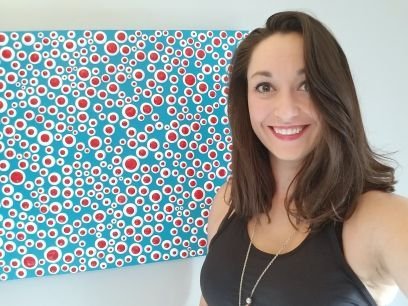 Self-labeled a “heavy-texture pointillism artist,” Sara’s work boldly modernizes classical pointillism through her innovative use of want-to-touch and want-to-taste texture. Sara applies each color with precision and care to create flowing movement. Sara’s obsession to detail and quest to captivate has swiftly earned her new collectors across the United States and abroad. She currently lives in Richmond, Virginia, where her studio is located. Her prior career as a Biglaw attorney instilled in her the drive to create high-quality work that makes an immediate impact. Her travels to and experiences in Israel, Thailand, Italy, Canada, and Mexico heavily influence her use and expression of color.
Self-labeled a “heavy-texture pointillism artist,” Sara’s work boldly modernizes classical pointillism through her innovative use of want-to-touch and want-to-taste texture. Sara applies each color with precision and care to create flowing movement. Sara’s obsession to detail and quest to captivate has swiftly earned her new collectors across the United States and abroad. She currently lives in Richmond, Virginia, where her studio is located. Her prior career as a Biglaw attorney instilled in her the drive to create high-quality work that makes an immediate impact. Her travels to and experiences in Israel, Thailand, Italy, Canada, and Mexico heavily influence her use and expression of color.
See more at http://saraoconnorfineart.com or visit her on Instagram at @saraoconnorfineart.
The post Case Study: Sara O’Connor, Heavy-Texture Pointillism appeared first on Online Marketing for Artists.
August 22, 2018
How to Sell Art on eBay
Have you considered selling your art on eBay? With its extensive history on the web (eBay was founded in 1995!) and enormous customer base, eBay is a solid sales platform to consider. As with other sales channels like Etsy and Art Fire, unless you’re incredibly experienced selling on eBay or have the time to put in to aggressively marketing your work you will not want to depend on eBay alone. With the right approach, however, eBay can make a nice addition to your other art revenue streams.
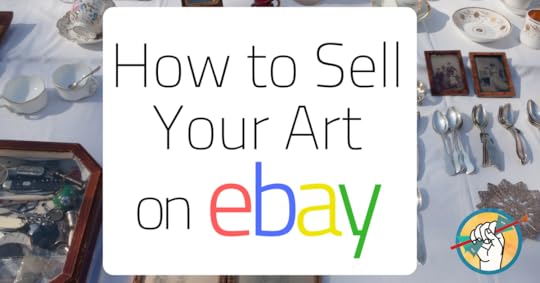
First, let’s take a look at what a few successful eBay artists are doing right.
What Successful eBay Artists Are Doing
Jane Crawford (jane-crawford)
Jane Crawford is an Australian artist creating aboriginal-inspired abstract oil paintings.
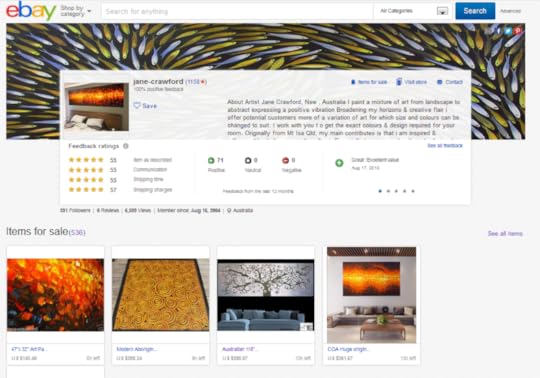
Jane is doing something interesting and a little different: not unlike a tattoo artist’s book of flash designs, she has original designs available in limited quantities that she paints to order. This allows the customer to choose their colors and receive a piece custom-painted for their space.
Offers custom paintings and includes a free art print with purchases
Sells large originals as well as small prints at a lower price point
Good photos of art, displayed in various mockup settings
She accepts the best offer for some pieces
Certificate of authenticity included with all pieces
Highly descriptive product titles for easy searching
Jon Allen (statements2000)
Jon Allen creates metal sculpture art and offers free shipping on every piece. His work runs a wide gamut from $10,000 down to $40 for the smallest pieces, with the bulk of it landing in the mid to low hundreds.
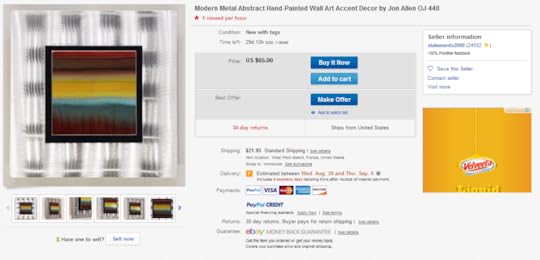
Nearly all of his art has free shipping
All photos show the art installed in a mockup space
Highly descriptive product titles for easy searching
The artist’s name is included in every product listing
He has 100% positive feedback
Chuck Black (wildlifeandart)
Rather than regularly listing inventory on eBay, wildlife artist Chuck Black chooses some pieces to auction there and links to the ebay auctions on his website.
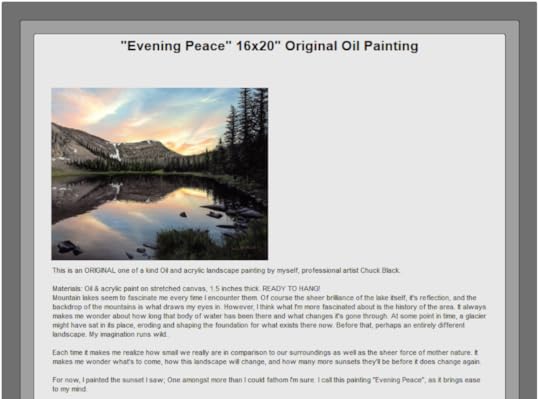
Each product includes an extensive bio with tons of pictures, a photo of Chuck with the listed painting, a description of the piece, his reasons for painting it, etc.
Pieces are sold ready to hang
Highly descriptive product titles for easy searching
The artist’s name is included in every product listing
He has 100% positive feedback
What do these successful artists have in common? First of all, each of their product listings is highly descriptive. they prioritize high quality photos of their art and showing the art in a mockup space (see our list of the top apps that allow you to preview your art on a wall), and they have 100% positive feedback. More important, however, is the fact that these artists all have an established web presence apart from eBay. Current collectors can search for them on eBay, and they can point new collectors to their eBay auctions from their other sales channels and web presences.
Feeling inspired? Here are ten tips to help you sell art on eBay.
10 Tips to Sell Your Art on eBay
Open a dedicated seller account just for selling your art. Do not mix your original art in with any other goods that you may sell on eBay; this hurts your professionalism and ability to be taken seriously.
Take high quality photographs of your art (here’s how) and better yet, show it hanging in a space.
Take some time to figure out the most effective keywords for your descriptions. eBay by design has a highly customizable search feature to help buyers find what they’re looking for. Collectors can search by medium, subject, style, features (framed, matted, signed), region, surface, color, size, so include as much information in your listing (not necessarily all in your product title) as possible. Don’t skimp on these details to save time or expect your images to speak for themselves!
Include a detailed artist bio and photos. Work-in-progress photos are appealing, as well as images of you with your work or actively working in your studio space. Buyers love to get a peek behind the curtain, and this lends you a great deal of credibility.
Write a detailed description about each piece for sale including details like why you chose the title, your reasons for creating the piece, where it would look really great, and who you envisioned loving it when you created it.
Decide on a reserve price, which is a hidden “lowest price” so you don’t get stiffed. If you are auctioning the art rather than using the Buy It Now option, your reserve price should be the lowest price you would be willing to sell the piece for in any other setting. This ensures you receive at least what it’s worth and don’t get lowballed.
Offer free shipping by factoring the cost of shipping into your reserve price or Buy It Now price.
Link to your ebay shop from other places so more people can find you.
Get good feedback (here is a great post that breaks down eBay feedback, why it’s important, and how to request feedback from buyers: https://crazylister.com/blog/improve-ebay-feedback/)
Keep your branding consistent. eBay is one more sales channel on the internet to let potential collectors know you exist. Keep your web and offline presence consistent with your artist statement, colors/fonts, profile picture, etc. You can find customizable eBay templates to help you do this here: https://pages.ebay.com/tg/en-us/storefronts/designtemplates.html
Having an already established name is very useful in getting your work seen and sold on eBay, but it isn’t absolutely necessary. eBay offers a wide range of options for selling your art the way you want whether you want to use a timed auction, offer it for sale at a fixed price, or accept offers on a suggested price. Like other third-party websites, eBay should not be your only source of art revenue, but with a little work it can be a really useful addition to your growing art business.
Do you sell your art on eBay? We’d love to hear about your experiences! Let us know in the comments!
The post How to Sell Art on eBay appeared first on Online Marketing for Artists.
August 15, 2018
What To Do When Selling Your Art Feels Hopeless
Have you given up?
Trying to sell art can be a demoralizing business. Putting a piece of who you are out into the world for others to criticize- or worse, ignore completely- takes bravery and a thick skin. And the truth is that sometimes your work, though it may be objectively good, just doesn’t resonate with the people who see it. This is hard enough if you’re just hoping to share a part of yourself with the world, but if you’re trying to turn your art into a real business it can suck the soul right out of you.
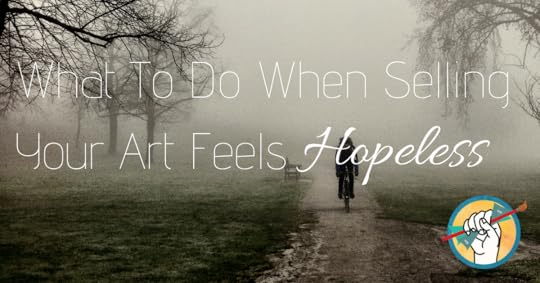
Steve Ogden is an artist and animator who regularly shares his comics to Instagram, which is where he shared this thought the other day:
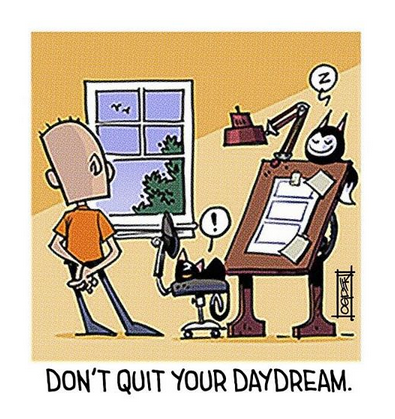 by Steve Ogden, shared with permission
by Steve Ogden, shared with permissionWhether you’ve just been talking about it for years or actively chasing down your goals, you occasionally hit the wall. You wonder why you’re doing this to yourself. You’re tired, you’re losing hope. You wonder if it’s all worth it.
My advice is to remember why you started, and check yourself against that. Is it still worth it? Is it still something you want to achieve? Then don’t let up. Often, right on the other side of that dark night is the breakthrough you’ve been waiting for.
Sometimes it doesn’t come, though. Sometimes, the only thing getting you through is you. But when you finally do it, you complete what you set out to do, you’ll have that sense of accomplishment, and that is worth a lot, too. – Steve Ogden, http://wishtales.com
If you are feeling demoralized, take Steve’s advice to heart and remember why you started. If you still feel that spark of desire, if you’re still holding on to your why, whatever it is, then it’s not time to give up yet. Here are some tips for taking an objective look at your situation and answering the tough questions about the distance between where you are and where you want to be.
Assess your situation
What are you trying to do?
Are you selling your art on a third-party website like Etsy or Artfire? Your tactics and approach will have to be tailored to the unique way that those sites work. (We highly recommend that you still sell your art on your own site.) If you are trying to lean into using Facebook as your primary sales channel, your approach will need to look different from if you are doing the bulk of your marketing offline. Take a look at your approach and make sure that it’s lined up with your objective- marketing is not one-size-fits-all and there’s no quicker way to get demoralized than working extremely hard using the wrong tactics.
Where are you trying to go?
Where do you hope to be 3 months from now? How about 6 months, or a year? It’s great to shoot for the moon, but if your goals are wildly unrealistic you’re likely to be setting yourself up for disappointment. If you have never written out your goals for your art business, then it’s not surprising if you feel frustrated. Sit down and write out clear, actionable goals for both the short- and long-term. Let go of the unrealistic goals (or shelve them for when you’re further down the road).
Who are you trying to sell to?
Answering this question is an essential first step. This is Selling Your Art 101. You’ve got to identify your target market and get inside the head of your ideal collector. If you haven’t taken this step, every marketing attempt is like a shot in the dark, costing you your time, your money, and your sanity.
How long have you been trying?
Making a living from your art takes time- and probably even more than you think.
We recently published a case study on TAA artist Tom Harold, who just quit his day job earlier this year- about ten years after creating his first piece. Although we read more stories online of artists who got lucky, Tom’s story is much more typical. Setting fair and appropriate expectations for yourself will protect you from feeling that it’s hopeless when things move slowly- and sometimes they will.
Take Action
Prioritize your time carefully.
Are you spending your time on the right things? Yeah, making art is the fun part, but you need to be putting at least as much time as you do making art into marketing that art or no one is even going to realize you exist. Learn more about the 50/50 rule and why it’s imperative: The 50/50 Time Rule for Art Business
Get a professional critique
If you’re not feeling objectively good about your art or are unsure about the quality level, there are countless online forums filled with friendly artists ready to share critiques. Connecting with other artists, if nothing else, is a way to remind you that you are not alone in your journey and to get some advice from others in the industry who have likely been right where you are and emerged out the other side.
Get inside your ideal collector’s head
Who is your ideal collector? Try this exercise: create a profile of a single person who represents your target market. Spending some time getting into your ideal collector’s head will give you insights into where to go to find them and how to reach them effectively.
What is their name?
What do they do for a living?
How much do they make?
What do they do in their free time?
Where do they spend their time?
Our flagship course How to Sell Your Art Online 101 has a much more in-depth study on identifying your target market.
Stop comparing yourself to others
I know… easier said than done. Your social feeds are likely flooded with the perfectly-curated representations of life that other people want you to see- and this includes other artists. If you can’t take a complete social media hiatus, try snoozing, muting, or unfollowing (you can do this on Facebook without actually unfriending) those people that you find you are comparing yourself to. Try removing the temptation to compare yourself to others for 30 days. During that time, focus hard on taking the actionable steps you’ve already written down, and see how you’re feeling. Low information diets create action, and that couldn’t be truer for social media.
Make art that makes you happy
Do not create the art that you think will sell based on what others are doing successfully. The happiest artists are the ones creating art that makes them happy. And a happy by-product of that work is that very often, your audience responds better to the work that you’ve clearly enjoyed making- or you find a new audience that appreciates it. Paula Jones, an artist doing very well selling her art to the very engaged audience she’s cultivated on Facebook, is a great example of this concept. She used to paint cows, but found over time that this was no longer what she wanted to paint- and it showed in her sales. When she began painting what was in her soul, her sales took off.
Try for some quick wins
When you’re not seeing the success you hope for, sometimes what you need is just a little push to get the momentum going. Try for some quick wins- see some ideas here: How to Get a Quick Win Selling Art Online
Remember that this takes time
We already mentioned this one, but it’s so important to remember that we’re going to say it again. Cory worked on The Abundant Artist for 6 years before he was able to quit his day job. Here are some other artists who worked for years before they were able to do what they love full time:
We’ll leave you with these encouraging parting words from TAA artist Anita Nowinska, who, as she put it, “behaved like a complete loon” and is now on track to make the kind of money from her art business that she has only dreamed of.
If I was feeling despondent or upset that things were not happening, I looked at everything I’d done, realized I was doing my best and accepted that that was all I could do. I saw that each day I had taken a step forward and that steps turn into miles.
I kept believing I could do it!
When I started to feel that the ‘work-work’ was demoralizing me, I did the fun work, the painting, and recorded it. I used it as work in progress for social media, etc.
Every few months I’d feel like my head was going to explode, so I’d get in the car and run away for a few hours and find a garden or beach to chill out in (usually sketching or taking photos to use for marketing).
I’d come back and start at it again.
I kept looking at what I had achieved, not at what I hadn’t!
Then I ramped it up and did some more work!
Hey, you know, before you say I CAN’T DO THAT, I just want you to know…
I am very conscious that I’m not writing enough blog posts.
I haven’t finished calling my whole PR list.
I haven’t perfected my website, I haven’t called enough influencers… lots of havent’s.
I haven’t done a thousand and one things I should be doing more of!
BUT THAT’S OK- I’M JUST DOING MY BEST!
-Anita Nowinska
Learn more about The Abundant Artist courses and how they can help you get through a slump and start living a creative life on your own terms.
The post What To Do When Selling Your Art Feels Hopeless appeared first on Online Marketing for Artists.
The Abundant Artist Goodreads blog
- Cory Huff's profile
- 31 followers



